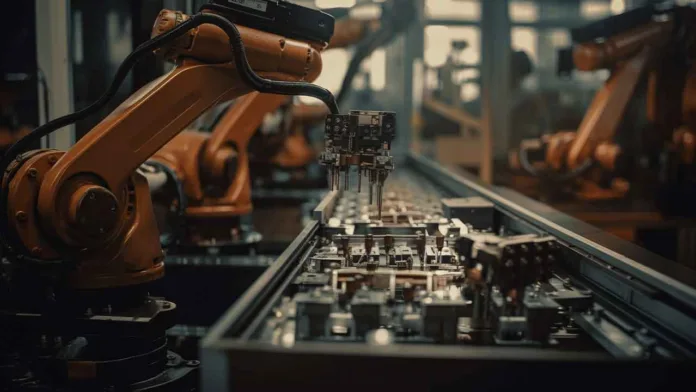In today’s rapidly evolving industrial landscape, industrial robotics is revolutionizing the way manufacturing operates. From assembly lines to quality control, robots are increasingly becoming an integral part of the production process. As companies strive to improve efficiency, reduce costs, and stay competitive, industrial robotics offers a powerful solution that is reshaping manufacturing as we know it.
The Rise of Industrial Robotics
The integration of robotics into manufacturing began decades ago, but recent technological advancements have accelerated their adoption. Sophisticated sensors, AI-driven programming, and machine learning have enabled robots to perform complex tasks with precision and speed. This shift is not just about automation — it’s about smart automation.
Companies now use robots for a variety of applications, such as welding, painting, packaging, material handling, and even assembling intricate electronic components. The scope and flexibility of modern robots have expanded significantly, enabling them to work safely alongside human workers in collaborative environments.
Key Benefits of Robotics in Manufacturing
1. Increased Productivity
One of the most obvious advantages of using industrial robotics is the boost in production speed. Robots can operate 24/7 without fatigue, leading to a significant increase in output. This continuous operation reduces downtime and enhances overall production efficiency.
2. Enhanced Precision and Quality
Robots are capable of performing tasks with a high degree of accuracy, minimizing errors and inconsistencies. In industries where precision is crucial—such as electronics or pharmaceuticals—this leads to improved product quality and fewer defects.
3. Workplace Safety
Repetitive and hazardous tasks often pose safety risks for human workers. With robots taking on dangerous jobs, manufacturers can reduce workplace accidents and injuries, creating a safer working environment.
4. Cost Efficiency
While the initial investment in robotics may seem high, the long-term cost savings are significant. Reduced labor costs, decreased waste, and improved energy efficiency contribute to a stronger bottom line over time.
5. Flexibility in Production
Modern industrial robots can be reprogrammed and retooled quickly, allowing manufacturers to adapt to changing production demands. This agility is particularly beneficial in industries where customization and short production runs are common.
Applications of Industrial Robotics Across Sectors
Automotive Industry: From welding chassis parts to installing windshields, robots handle a wide range of tasks with speed and consistency.
Electronics Manufacturing: Delicate components are assembled using robotic arms with microscopic precision.
Food and Beverage: Robots manage packaging, labeling, and sorting, ensuring hygiene and consistency.
Metal and Machinery: Heavy lifting, drilling, and cutting tasks are made more efficient and safe through robotic integration.
Robotics and the Future Workforce
The rise of industrial robotics has led to concerns about job displacement. However, the shift is more about transformation than replacement. As robots take over repetitive tasks, new roles are emerging in robot programming, maintenance, and systems integration. The demand for skilled labor in areas like AI, robotics engineering, and data analytics is on the rise.
Upskilling is now essential. Manufacturers are investing in training programs to equip their workforce with the skills needed to work alongside robotic systems, ensuring a collaborative future where humans and machines coexist productively.
Challenges to Adoption
Despite the advantages, implementing industrial robotics is not without challenges:
High Initial Investment: Purchasing and setting up robotic systems requires substantial capital.
Integration Complexity: Aligning robots with existing infrastructure and workflow can be technically demanding.
Cybersecurity Risks: As robotics become connected through IoT and cloud platforms, safeguarding against cyber threats becomes crucial.
Change Management: Gaining employee acceptance and managing the cultural shift in traditional manufacturing environments can be difficult.
Addressing these challenges requires strategic planning, vendor support, and a strong focus on ROI.
The Road Ahead: Smart Manufacturing
Looking forward, industrial robotics will continue to evolve, especially with the rise of Industry 4.0. Robotics will be integrated with AI, machine learning, and real-time analytics to create smart factories. These connected systems will make autonomous decisions, self-diagnose issues, and optimize performance without human intervention.
Additionally, collaborative robots (cobots) will become more prominent, working safely beside humans in shared workspaces. These cobots will enhance human capabilities rather than replace them, fostering a new era of synergy between people and machines.
Conclusion
The transformative power of industrial robotics in manufacturing is undeniable. As technology continues to evolve, robotics will play an even more central role in driving innovation, efficiency, and competitiveness in the global manufacturing sector. Companies that embrace this shift today will be best positioned to lead the market tomorrow.
